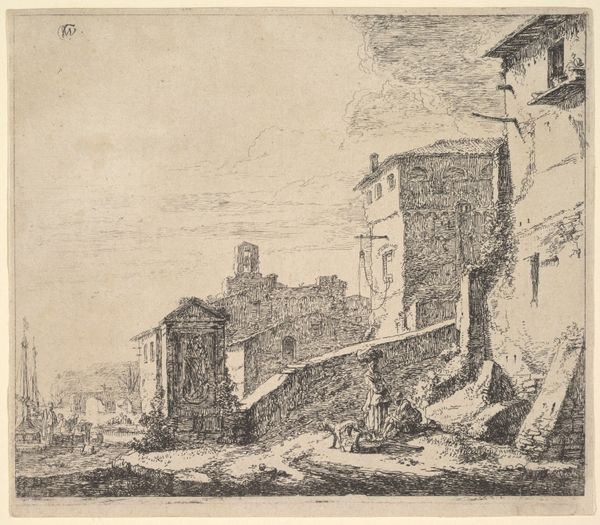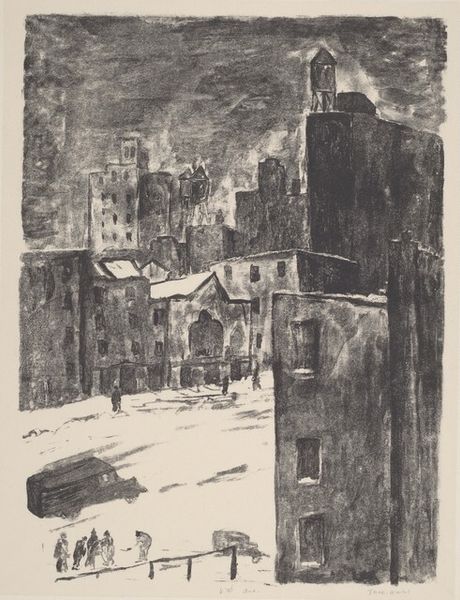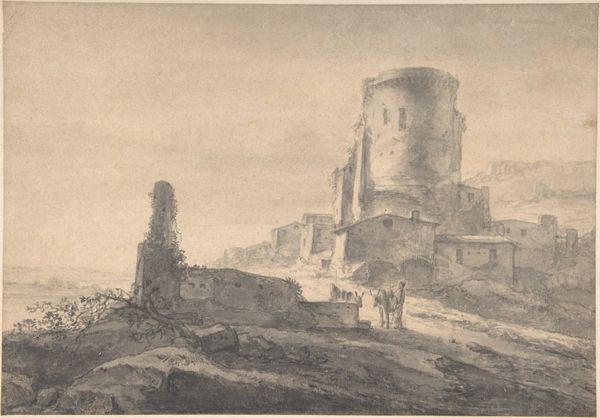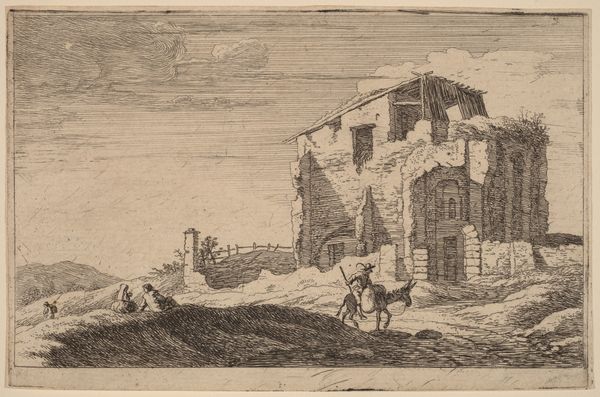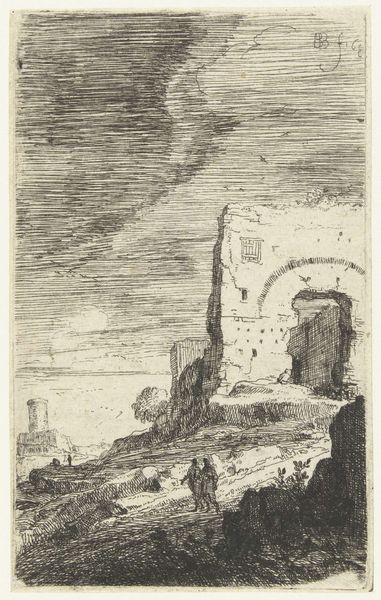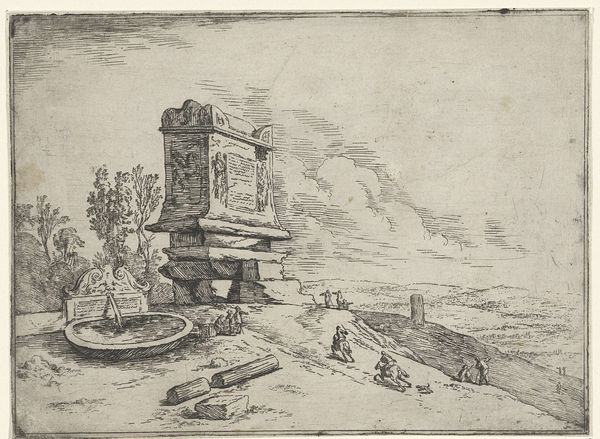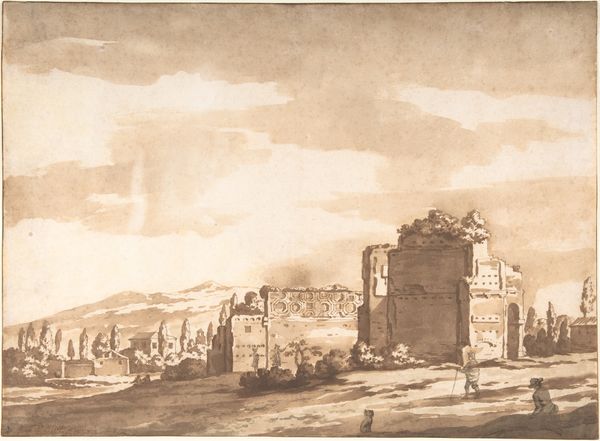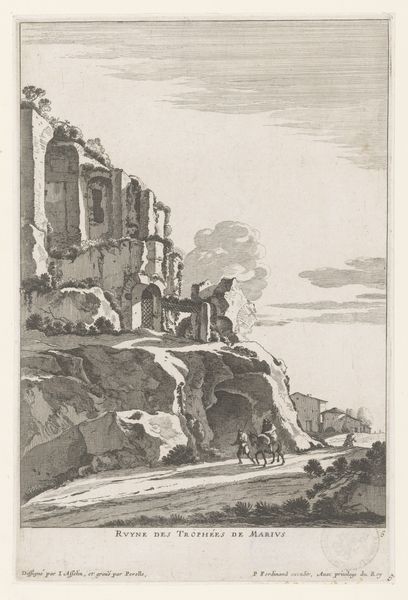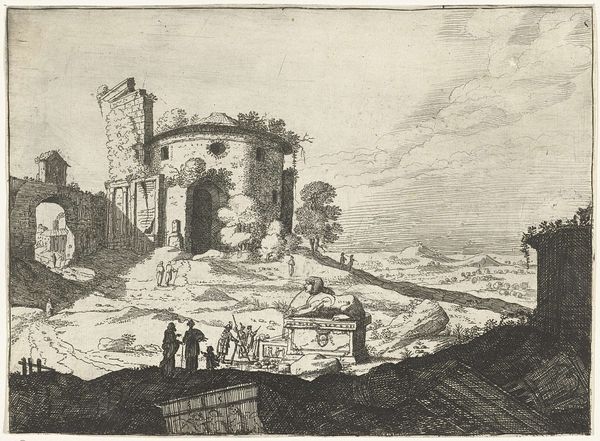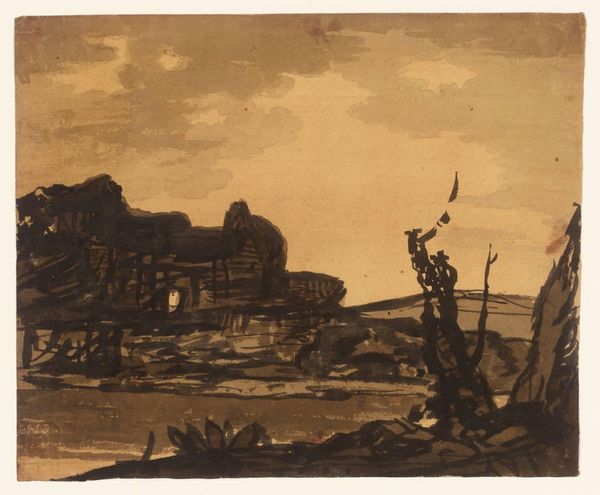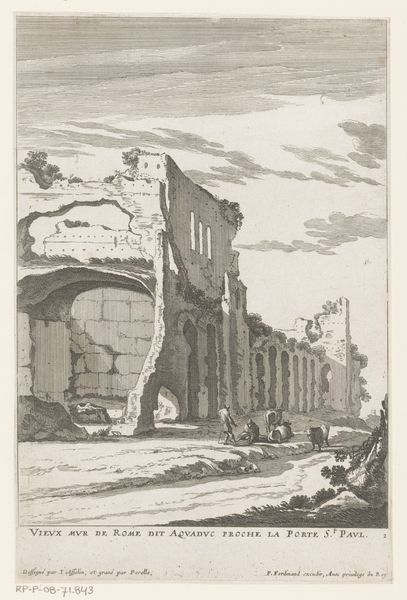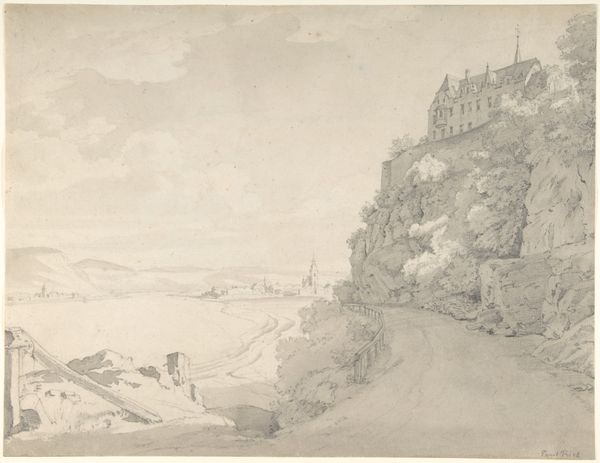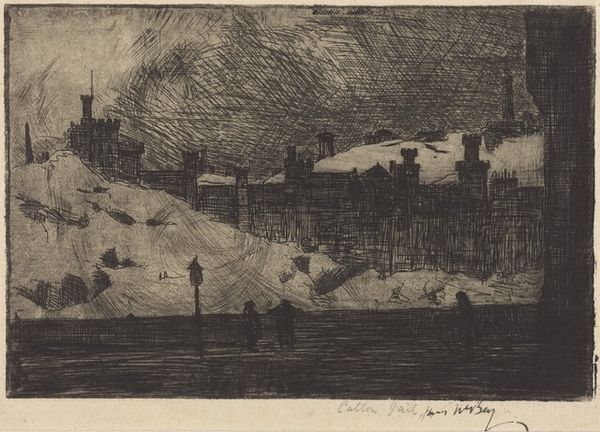
drawing, ink, architecture
#
drawing
#
baroque
#
ink painting
#
landscape
#
ink
#
italian-renaissance
#
watercolor
#
architecture
Copyright: Public Domain
Curator: Jacob van der Ulft's drawing, "Ein römisches Theater bei einer Brücke," now held at the Städel Museum, offers us a sepia-toned glimpse into a past era, though its precise date remains unconfirmed. Editor: Immediately, the chiaroscuro effect strikes me. The deep shadows contrasted with the brilliant, almost blinding, highlights evoke a powerful sense of drama and transience. Curator: Yes, van der Ulft masterfully employs ink and watercolor to portray not just the ruins themselves but also the weight of history bearing down upon them. Notice the careful depiction of architectural elements mingled with the raw energy of nature's brushstrokes. Editor: The ruins feel… incomplete, disrupted. What was once orderly is shown to be subject to entropy. Even the singular figure atop the column appears to be casting its gaze backwards rather than moving into the future. The bridge almost melts into the background, perhaps symbolizing its disuse. Curator: Indeed. Bridges are often interpreted as liminal spaces, but here it lacks its functional symbolism and blends almost perfectly with what appears to be its natural environment, symbolizing perhaps, its lost role in the connectivity between humans. And yet, isn’t there a hint of defiance as the theatre continues to impose on its landscape even with time wearing it away? The ruins hold layers of stories from past civilizations to this moment. Editor: Defiance, perhaps. Or maybe a wistful echo. The washes of ink lend the scene a dreamlike quality, as if we’re not merely observing a historical site but witnessing a memory fading away. I am left reflecting on how structure is ultimately consumed, both physically, but perhaps psychologically. Curator: Absolutely. The drawing invites us to reflect on how physical spaces shape and are shaped by memories. To be confronted with history through Van Der Ulft's work feels like unlocking a secret of cultural legacy passed down through art. Editor: It's a potent reminder of impermanence, isn’t it? That all grand structures, whether literal or metaphorical, are destined for the same fate. A truly thoughtful and subtly melancholic piece.
Comments
No comments
Be the first to comment and join the conversation on the ultimate creative platform.
